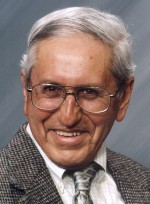As the nation observes Hispanic Heritage Month, which begins Sept. 15, the church has much to celebrate. Historically, the Spaniards evangelized much of what is now the United States, extending in a great arc from St. Augustine in Florida, where the first Mass was celebrated in 1565, to the San Juan straits in what is now Washington state.
Alone among major Christian denominations in the U.S., the Catholic Church continues to grow and most of that increase is Hispanic or Latino. Yet, they have not always been welcomed.
When Redemptorists founded St. Gerard, the first parish in eastside San Antonio in the early 1900s, they built a beautiful mission-style church. But the Anglo parishioners did not want Mexican-Americans worshipping alongside them. A chapel was built for the Latinos in the barrio.
[hotblock]
Over the ensuing decades, the parish’s Latino population grew steadily while the Anglo population declined as many moved to the suburbs or had smaller families. Toward the end of the 20th century, the Redemptorists, feeling that prejudice had abated, wanted to close the chapel and merge the congregations in the main church. But the Mexican-Americans balked.
Victory Noll Sister Gregoria Ortega asked me to support the Mexican-Americans by writing about their resistance. For some reason, I was unable to do so and always wondered how the issue was resolved. Recently, I asked an old friend, Father Virgilio Elizondo, and Brother Ed Loch, archdiocesan archivist. As it turned out, Mexican-Americans were not only able to keep their chapel. Today it is a full-fledged parish, Our Lady of Perpetual Help, its buildings covering most of a city block. But they also moved into St. Gerard and are the overwhelming majority.
If they’re not yet the majority of Catholics in the nation, Latinos soon will be.
According to recent figures, the Los Angeles Archdiocese, the most populous in the nation with 5 million Catholics, is 70 percent Hispanic. In many others, stretching from the Southwest to Florida, Latinos also are already the majority. Population growth is not the only cause. In good times and bad, like the Latinos of Our Lady of Perpetual Help, they remain faithful.
In 2000 at a Catholic Charismatic Renewal conference in New Jersey, I met a Puerto Rican permanent deacon who said that when his family first came to the area, they were not allowed to worship in their parish church. For them, Mass was celebrated in a chicken house. But they did not abandon the faith, and now, he announced proudly, “we worship in the cathedral.”
“Waves and still more waves have passed over the Spanish-speaking people, but they are still as firmly rooted in the Southwest as a forest of Joshua trees,” wrote the novelist D.H. Lawrence about Hispanics in the U.S. “They are not interlopers or immigrants but an indigenous people.”
Today that can be said of the nation as a whole, even Alaska and Hawaii. And it is certainly true in the Catholic Church.
As to their potential, late Mexican novelist Carlos Fuentes wrote that Hispanics in the U.S. are uniquely qualified by their diversity to help resolve the universal question of how to deal with the “other” at a time of global interdependence.
PREVIOUS: Dad avoids caring for his special son
NEXT: St. Peter Claver: Pioneering fighter for human rights




Share this story